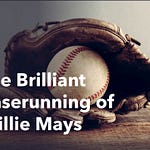INTRODUCTION From The Sports Time Traveler™
In 1974, Johnny Miller got off to the hottest start in PGA TOUR history.
He won the prestigious Bing Crosby National Pro-Am at Pebble Beach on the first weekend in January.
Then he captured the 2nd tournament of the year, the Phoenix Open, by shooting 4 consecutive rounds in the 60s.
One week later he started off …












